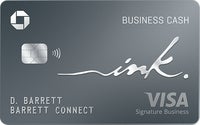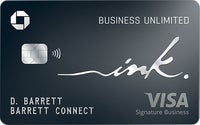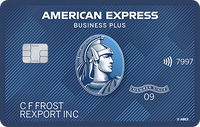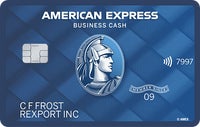Guide to the best credit cards for nonprofits

The Bankrate promise
At Bankrate we strive to help you make smarter financial decisions. While we adhere to strict , this post may contain references to products from our partners. Here's an explanation for . The content on this page is accurate as of the posting date; however, some of the offers mentioned may have expired. Terms apply to the offers listed on this page. Any opinions, analyses, reviews or recommendations expressed in this article are those of the author’s alone, and have not been reviewed, approved or otherwise endorsed by any card issuer.
Our writers and editors used an in-house natural language generation platform to assist with portions of this article, allowing them to focus on adding information that is uniquely helpful. The article was reviewed, fact-checked and edited by our editorial staff prior to publication.
A nonprofit organization is one that has received tax-exempt status from the Internal Revenue Service (IRS), usually because it provides a public service or supports a social cause. This type of company refrains from earning profits for its owners and donates all income (beyond operational expenses) to whatever cause it champions.
But that doesn’t mean nonprofits don’t need their own credit card. Like any other business, nonprofit owners could benefit from having a dedicated small-business credit card they use to keep business purchases separate and simplify expenses for easy filing come tax season.
Beyond these benefits, nonprofit organizations can also use a business rewards credit card to earn cash back while gaining access to important consumer protection perks.
Comparing the best credit cards for nonprofits
The best credit cards for nonprofits are ones with plenty of perks, no hidden fees and generous rewards rates. Check out which cards could be the best fit for a nonprofit organization.
| Card name | Annual fee | Rewards | Bankrate score |
|---|---|---|---|
| Ink Business Cash® Credit Card | $0 |
|
4.3 |
| Ink Business Unlimited® Credit Card | $0 |
|
4.2 |
| The Blue Business® Plus Credit Card from American Express | No annual fee |
|
4.1 |
| The American Express Blue Business Cash™ Card | No annual fee |
|
4.3 |
Top cards for nonprofits

Ink Business Cash® Credit Card

Ink Business Unlimited® Credit Card

The Blue Business® Plus Credit Card from American Express

The American Express Blue Business Cash™ Card
How to choose the right credit card for your nonprofit
Nonprofits don’t really need the same personal perks or benefits you get with business credit cards that charge annual fees, so you shouldn’t consider cards that charge them — unless you can justify them with your unique situation.
Although plenty of the best cards for nonprofits don’t charge annual fees, this doesn’t necessarily rule out great rewards cards. When it comes to choosing the right card for your nonprofit, you should consider cost, perks, rewards and redemption options .
Factors to consider when picking a nonprofit credit card
Annual fees: To find the right nonprofit credit card, you’ll want to compare options with no annual fee to keep costs low.
Perks and benefits: Keep an eye out for business credit cards that offer consumer protections that could help your nonprofit business. Examples include purchase protection against damage or theft or extended warranties on eligible items that come with a manufacturer’s warranty.
Rewards: Think of the categories your nonprofit spends the most in. As you compare the top credit card offers, you’ll notice that some credit cards for nonprofits offer more rewards in certain categories.
Redeeming rewards: Consider how you can redeem the rewards you earn with your nonprofit card. Ideally, you’ll find a card that lets you cash in your rewards for charitable donations or for cash back you can funnel back into your nonprofit.
Frequently asked questions
-
A 501(c)(3) organization can obtain a credit card, and its use should strictly adhere to the nonprofit’s mission to maintain its tax-exempt status. Policies must be in place to ensure the card is used solely for business-related expenses.
-
A nonprofit business credit card should include features like no fees, rewards programs with rebates and discounts, automatic rebates on travel and fuel, discounts on office supplies and purchase protection.
-
Nonprofits can spend money on activities that support their mission, including program expenses for services and staff, fundraising costs, administrative fees for daily operations and compliance and legal costs to adhere to regulations. Responsible spending in alignment with its mission and laws is essential for these organizations, so business cards can help organize these expenses.
What’s next?
Use these Bankrate tools to help you figure out which card might best suit your business needs.
The bottom line
Nonprofit organizations don’t prioritize earning profits, but having a dedicated business credit card can provide numerous benefits. It can help separate business and personal purchases, simplify expenses, provide valuable rewards for business-related purchases and give you a line of credit that can help with ongoing costs.
Comparing and selecting the best credit card for your nonprofit can help streamline expenses and optimize rewards, allowing your organization to focus on its important social cause.]
Related Articles





